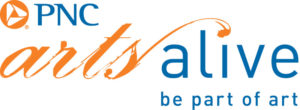Rainbow Mobile
Create a beautiful hanging mobile using cardboard, oil pastels, and yarn! This simple and enjoyable project is perfect for all ages and a great way to explore creativity together.
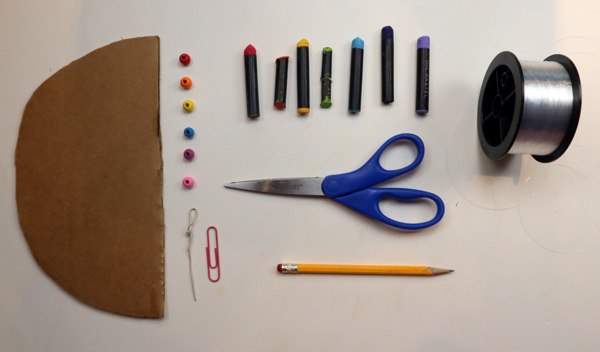
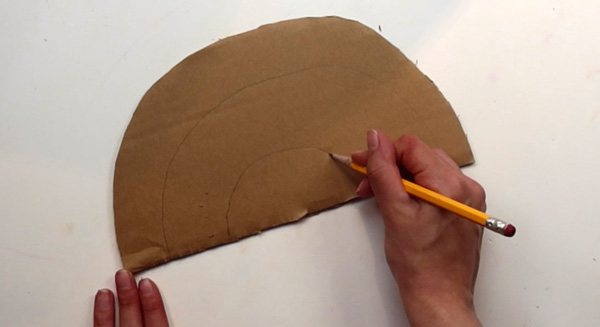
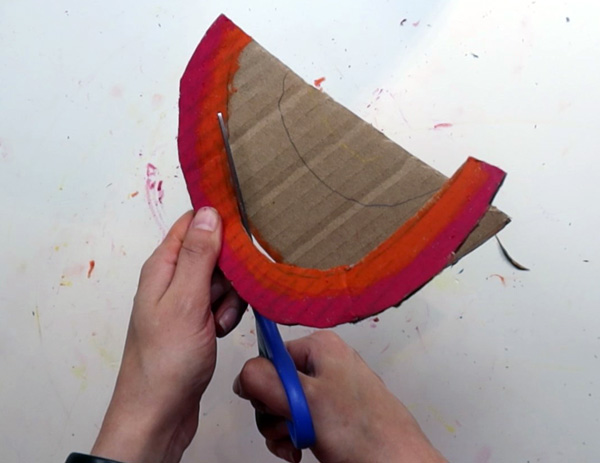
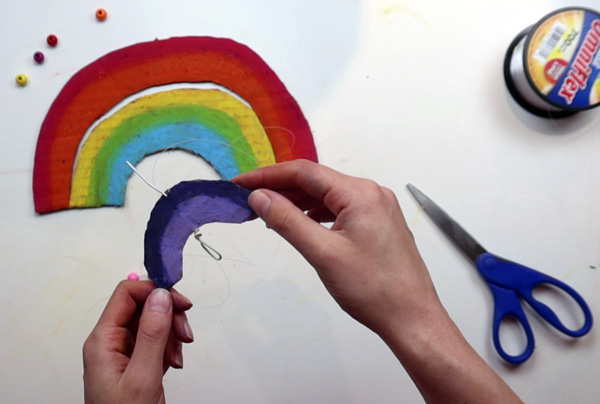
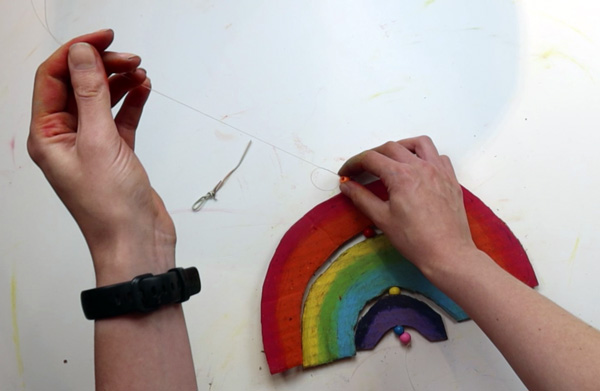
Materials:
- Cardboard
- Pencil
- Scissors
- Oil Pastels
- Glue or Tape
- Markers or Crayons
- Paperclip or a Long Yarn Needle
- Yarn or Fishing Line
- Beads
Step 1: Gather the materials listed above.
Step 2: Draw the rays of a rainbow onto a piece of cardboard, as big or as small as you would like. The rays should be half-circle arches that nest together. To achieve these nesting rays, draw a circle, cut it in half, and divide the half into arching thirds.
Step 3: Add color to your rainbow! The rainbow colors go in the ROYGBIV order: red, orange, yellow, green, blue, indigo, and violet. However, you can add whichever colors you want to your rainbow. Add color to both sides of each ray of your rainbow.
Step 4: If you do not have a long yarn needle, make one using a paper clip. Straighten the wire of the paperclip, fold it in half, and twist it together to make your “needle.”
Step 5: Cut a piece of yarn long enough to be knotted and threaded through all of the rainbow rays.
Step 6: Tie a triple knot at one end of the yarn. The triple knot will prevent the yarn from slipping through the cardboard.
Step 7: Thread the opposite end of the yarn through a needle or paperclip needle. In the middle of the lower arch of the smallest ray, insert the needle between the layers of the cardboard and push the needle upward through the top of the arch. Continue to thread each arch from bottom to top, going up in size.
Step 8: Knot the yarn at the top of the rainbow to create a loop for hanging. Trim the excess yarn.
Ideas to take the rainbow mobile to the next level:
- Light Integration: Add small LED lights or glow-in-the-dark paint to make the mobile shine, especially in low-light settings.
- Mixed Media: Incorporate different materials like beads, feathers, or fabric scraps for added texture and visual interest.
- Personalization: Add names, initials, or small photographs to make each mobile unique and personal.
Learning and Discussion Questions:
1. Experiment with color theory:
What happens when you blend different colors of oil pastels?
How do primary colors mix to create secondary colors?
Why do certain color combinations appear more vibrant together?
2. Consider our environmental impact:
How can we incorporate other recycled materials into our mobile to make it more eco-friendly?
What are some benefits of using natural elements in our art projects?
3. Reflect on Cultural Significance:
What do rainbows symbolize in different cultures and mythologies?
How can we incorporate symbols or colors from our own cultural backgrounds into the mobile?
4. Alexander Calder (1898 – 1976) is a well-known artist who created mobiles. However, many other artists explored mobiles in their creative practice. This Artsy article highlights seven of those artists.
WheatonArts Family Art Workshop video tutorials are presented by PNC Arts Alive!

